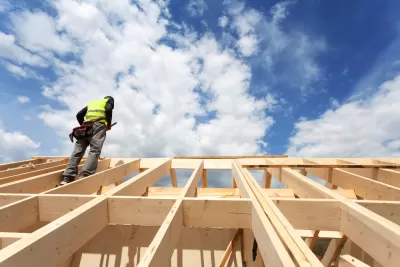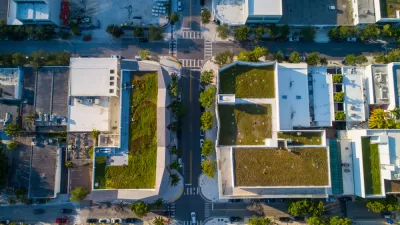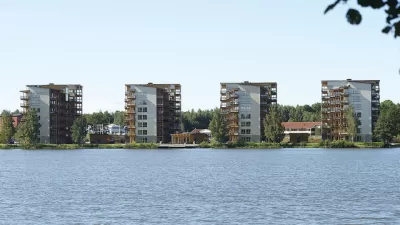New green buildings may be de riguer, but preservation does less harm.

In the last 50 years, humans have used more raw materials and created more waste than in all previous history,” report Jean Carroon FAIA and Ben Carlson.
By now, recycling and reuse are firmly rooted concepts in the American consumer conscience. But when it comes to building, the merits of maintaining and preserving existing buildings are often trumped by the short-term cost efficiencies of replacement and the rewards of green certification.
The built environment is the single largest consumer of materials, which account for 42 percent of all greenhouse gasses emitted in the United States. "Every product, no matter how green, has environmental impacts that include carbon emissions, water and energy consumption, pollution, toxicity, and waste," write Carroon and Carlson. Toxicity from building materials, such as the flame retardants used on everything from carpets to cables, impacts all Americans. "These chemicals are linked to dna mutation, thyroid disruption, memory and learning problems, delayed mental and physical development, lower IQ, advanced puberty, and reduced fertility."
Another critical concern often overlooked is the immediate impact of greenhouse gases emitted from building material extraction, production, construction, and disposal in favor of the touted energy efficiencies of new green buildings. But these energy savings are long-term projections, according to Careen and Carlson, pointing to a 2012 report for the National Trust for Historic Preservation. "It can take between 10 and 80 years for even an energy-efficient new building to overcome, through cleaner operations, the climate change impacts created by its construction." Carroon and Carlson argue that even if we do eventually achieve the goal of manufacturing totally clean and green buildings, there is inherent value in preservation. "Doesn’t a sustainable world need to value what already exists not only for environmental reasons but also to foster creativity, social engagement, and a unique sense of place?"
FULL STORY: Old is the new green

Alabama: Trump Terminates Settlements for Black Communities Harmed By Raw Sewage
Trump deemed the landmark civil rights agreement “illegal DEI and environmental justice policy.”

Study: Maui’s Plan to Convert Vacation Rentals to Long-Term Housing Could Cause Nearly $1 Billion Economic Loss
The plan would reduce visitor accommodation by 25% resulting in 1,900 jobs lost.

Planetizen Federal Action Tracker
A weekly monitor of how Trump’s orders and actions are impacting planners and planning in America.

Federal Homelessness Agency Places Entire Staff on Leave
The U.S. Interagency Council on Homelessness is the only federal agency dedicated to preventing and ending homelessness.

Restoring Northern India’s Himalayan ‘Water Temples’
Thousands of centuries-old buildings protect the region’s natural springs and serve as community wells and gathering places.

Milwaukee to Double Bike Share Stations
Bublr Bikes, one of the nation’s most successful, will add 500 new e-bikes to its system.
Urban Design for Planners 1: Software Tools
This six-course series explores essential urban design concepts using open source software and equips planners with the tools they need to participate fully in the urban design process.
Planning for Universal Design
Learn the tools for implementing Universal Design in planning regulations.
Caltrans
Smith Gee Studio
Institute for Housing and Urban Development Studies (IHS)
City of Grandview
Harvard GSD Executive Education
Toledo-Lucas County Plan Commissions
Salt Lake City
NYU Wagner Graduate School of Public Service




























